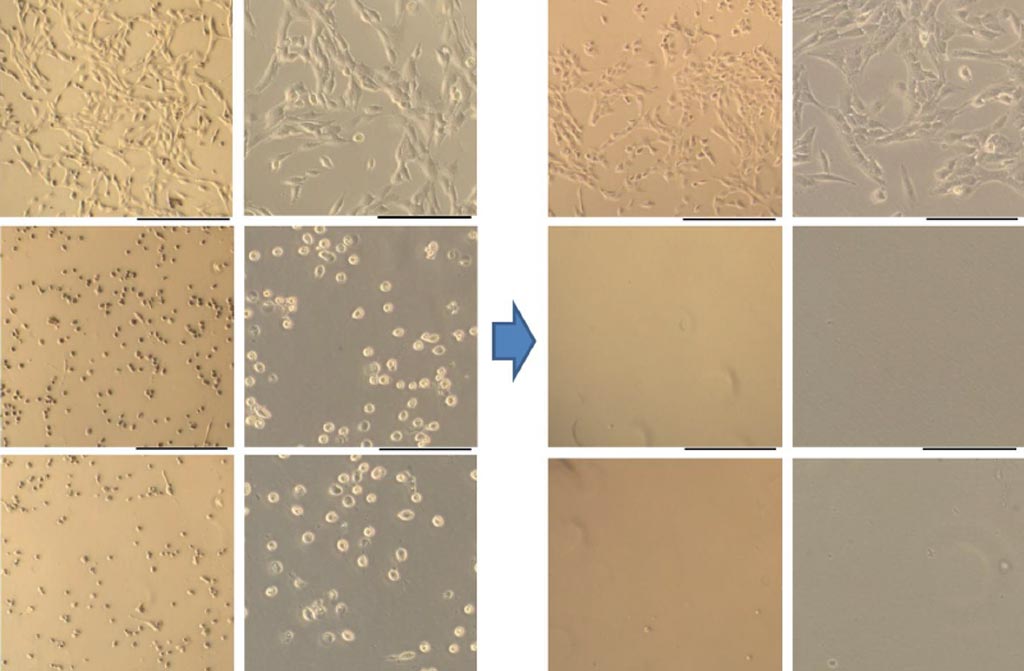Peptidase D Regulates Tumor Suppressor Cell Death Function
By LabMedica International staff writers
Posted on 27 Dec 2017
Cancer researchers have uncovered a mechanism that allows cells to regulate the tumor suppressor protein p53 and have explained how tumor cells exploit this mechanism in order to survive and grow.Posted on 27 Dec 2017
Most cancers fail to propagate unless the p53 gene is inactivated through mutation, or if the p53 protein becomes inactivated. A previously unknown mechanism for p53 regulation was described by investigators at the Roswell Park Cancer Institute (Buffalo, NY, USA) in the December 12, 2017, online edition of the journal Nature Communications. They found that the enzyme peptidase D (PEPD) bound and suppressed over half of nuclear and cytoplasmic p53 under normal conditions, independent of its enzymatic activity.

Image: Cell-culture images illustrate that disabling the protein peptidase is an effective strategy for killing cancer cells (Photo courtesy of Roswell Park Cancer Institute).
PEPD also known as prolidase among other names was discovered 80 years ago and shown to hydrolyze dipeptides with proline or hydroxyproline at the carboxy terminus. It is expressed ubiquitously and important for collagen metabolism. PEPD also upregulates various signaling molecules including hypoxia-inducible factor-1, transforming growth factor beta-, and its receptor via its catalytic products. Loss of enzymatic activity, due to PEPD gene mutation, is widely believed to be responsible for a disease known as PEPD deficiency (PD), which involves multiple organs and tissues, e.g., skin ulcer, reduced bone growth, splenomegaly, immune malfunction, and mental retardation.
The investigators showed that PEPD also suppressed p53 by directly binding to p53 in the nucleus and cytoplasm and suppressing both transcription-dependent and transcription-independent activities of p53, which did not require PEPD enzymatic activity. In addition, they found that PEPD suppression of p53 was essential for cell survival and tumor growth. P53 was activated by various cellular stress inducers.
Using doxorubicin (DOX) and hydrogen peroxide (H2O2) as examples, the investigators demonstrated that the PEPD-p53 complex served as a p53 depot which enabled robust p53 activation by stress. Releasing p53 from the PEPD-p53 complex resulted in the death or growth inhibition of cancer cells, which suggested the possibility that tumor cells overexpress PEPD in order to enhance p53 inhibition.
“This study uncovers a very important physiological function of PEPD and a critical new regulatory mechanism of p53,” said senior author Dr. Yuesheng Zhang, professor of oncology at the Roswell Park Cancer Institute. “The interaction between PEPD and p53 likely operates in most if not all cells, since both proteins are expressed ubiquitously. Therefore, disrupting the way in which PEPD suppresses p53 represents an important new therapeutic strategy for controlling many different types of cancer.”
Related Links:
Roswell Park Cancer Institute














